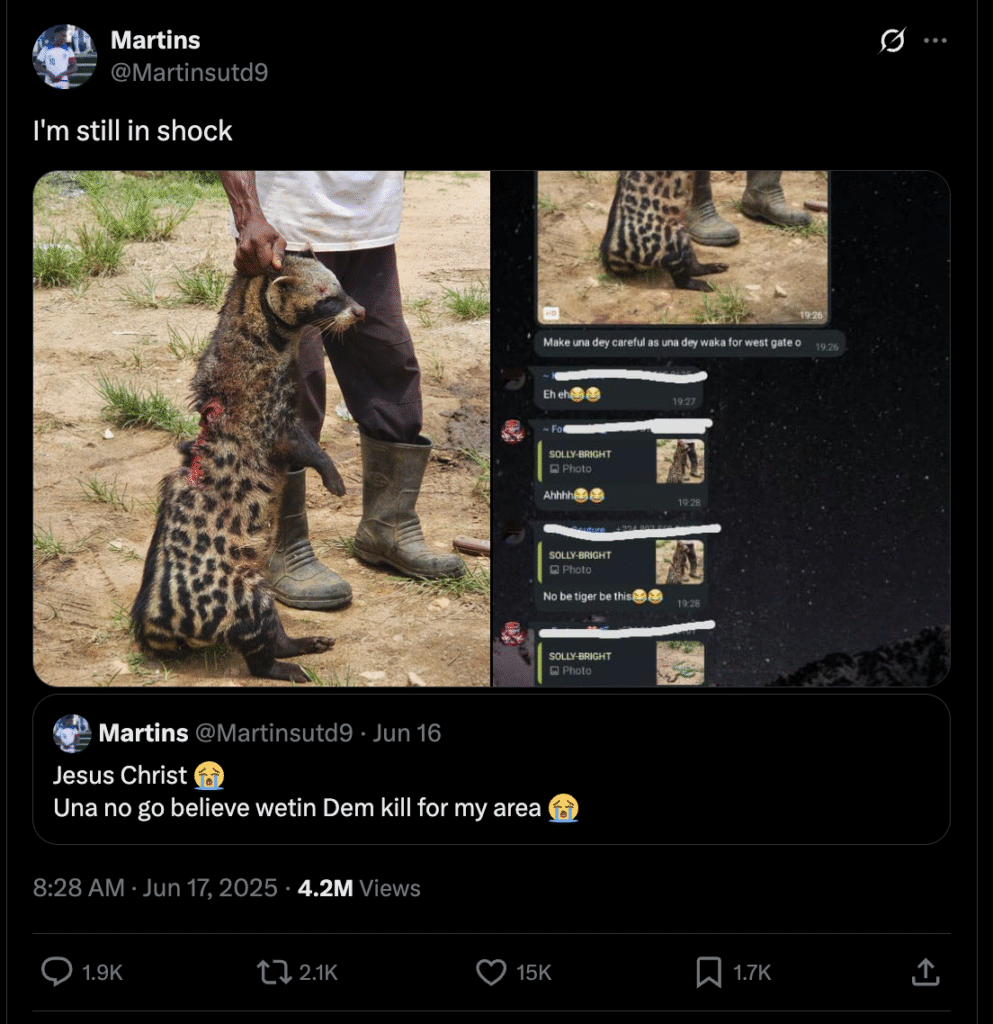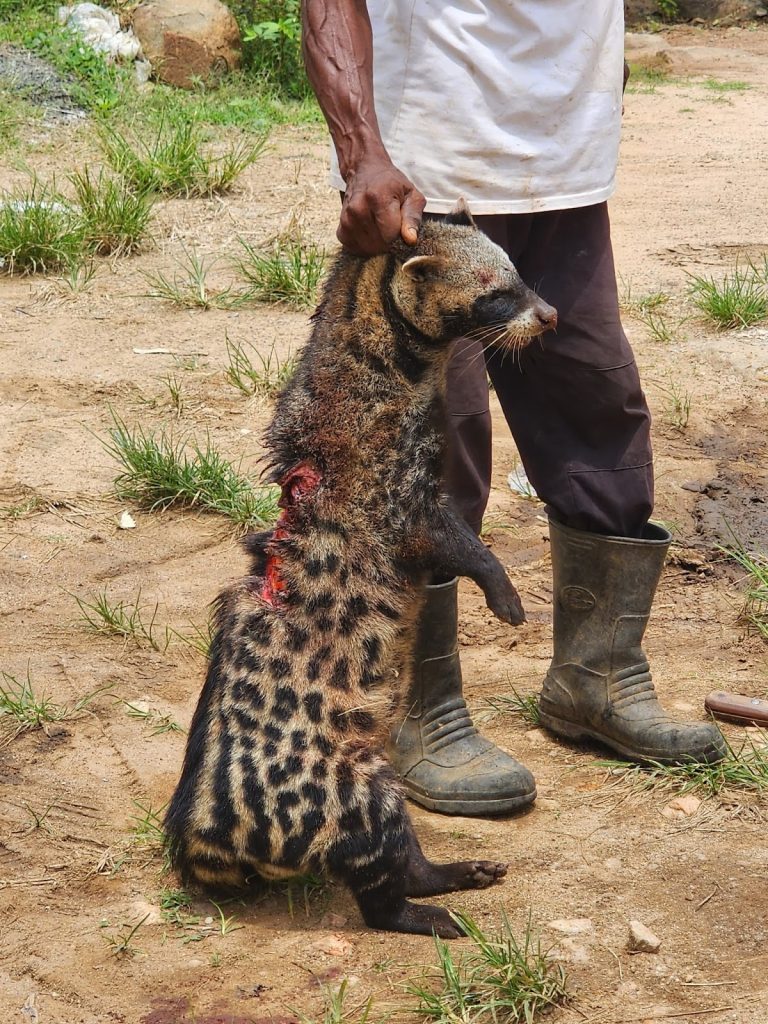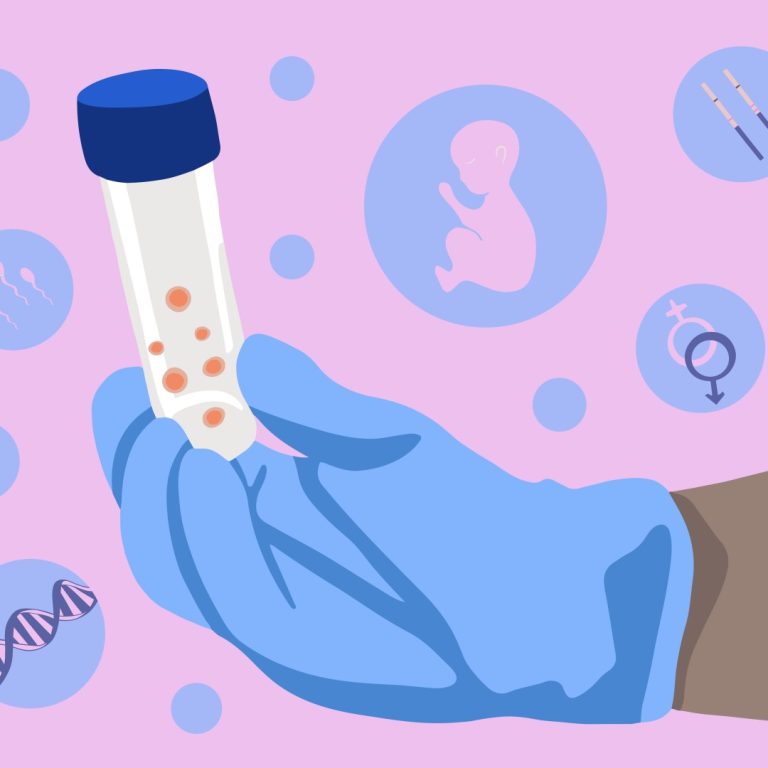By Glory Ugonma Itiafe
Claim: X users Eniola Daniel (@Unlimitedeniola), 734689SHzy (@conciergeoflife), Chibuzor (@buxzho), and Queen Eddie (@Eddieee321) claimed that the African civet is an endangered species.
Verdict: Misleading. Available data from the International Union for Conservation of Nature (IUCN) 2015 Red List categorises the African civet as ‘Least Concern,’ meaning it is not endangered or facing extinction. Since the last assessment was conducted 10 years ago, to determine a new status, another study must be conducted to demonstrate a 50–70% population decline across the species’ habitat, following IUCN assessment guidelines.
Full Text
On June 17, 2025, a post by X user Martins (@Martinutd9) featuring the image of a poached African civet killed in its environment sparked discussion on X.
Several comments under the post, including one from Eniola Daniel (@Unlimitedeniola) (archived here), expressed shock at the cruelty of those who killed the animal. He stated that the African Civet was an endangered wildlife species and should have been saved, not killed.

More users like 734689SHzy (@conciergeoflife), Chibuzor (@buxzho), Queen Eddie (@Eddieee321), Ikenna Nzimora (@ronaldnzimora), Osinanwata (@etomikash), and Dr Omotayo Idris (@EidForPresident) agreed with Eniola that the animal was an endangered species. Their comments also touched on the animal’s non-aggressive nature, its role in the ecosystem, the economic benefits, and the general culture of disdain for wildlife preservation in Nigeria.
Altogether, these posts garnered over 13,000 views and numerous engagements.
A few accounts, such as Bob (@BobMfonmma) and Teslim (@anakin skywalker), countered the claim, stating that the African Civet is widely distributed across sub-Saharan Africa and is not at risk.
As of June 24, 2025, Martins’ post had amassed over four million views, 1,900 comments, 15,000 likes, and over 2,100 reposts.
The African Civet, a nocturnal mammal native to sub-Saharan Africa, plays a vital role in ecosystems through seed dispersal and pest control. It is also recognised for producing civetone, a scented musk secretion historically used in perfumery and reportedly mixed into an oil used to anoint King Charles III and the late Queen Elizabeth II during their coronations.
The African Civet is frequently targeted by illegal poaching, with evidence often shared online, leading some to believe and claim the species is endangered.
DUBAWA deemed it necessary to fact-check the claim given the post’s virality and engagement, the conflicting opinions among users, the risk of misinformation shaping public views, and the concerns over illegal poaching and wildlife trafficking. This is also an opportunity to educate the public.
Verification
According to the International Union for Conservation of Nature (IUCN), which is the universal conservation body responsible for the status assessment of wildlife species, the African Civet is currently ranked “Least Concern” (LC) on its 2015 Red List.
“Endangered” is a formal classification used in the IUCN Red List to indicate that a species faces a very high risk of extinction in the wild. To be classified as endangered, a species must meet specific criteria, such as a population decline of 50 to 70% over 10 years or three generations, a small population size, or a restricted geographic range with ongoing threats.
Despite its current ranking, the African civet’s population trend remains unknown due to a lack of sufficient data for a comprehensive assessment. This knowledge gap is concerning, as the species faces ongoing threats from illegal hunting, human-wildlife conflicts, and escalating habitat loss across much of its range, which may significantly impact its population.
Mark Ofua, a veterinarian, seasoned conservationist, and West Africa Director for WildAfrica, confirmed that the African Civet is currently classified as “Least Concern” by the IUCN. However, he cautioned that the species faces a potential risk of endangerment in Nigeria due to limited research since the IUCN’s 2015 assessment and the absence of current data to evaluate population trends.
Highlighting the economic and ecological benefits of the African Civet, he stated that the world’s most expensive coffee, priced at around $1,300 per kilogram, is derived from civet droppings. Additionally, the civet’s gland secretion, civetone, is used in some of the most expensive perfumes globally.
Mark emphasised that public misconceptions, lack of awareness, and insufficient conservation education contribute to biodiversity loss.
He pointed out Nigeria’s unique context, noting that virtually all wildlife in the country is at risk of endangerment due to rampant hunting. Despite the African Civet’s widespread presence in sub-Saharan Africa and its high reproductive rate, he warned that its fecundity may not keep pace with the alarming level of poaching in Nigeria, where the species is being harvested at an unsustainable rate.
Beyond illegal poaching, Mark stressed that habitat loss and deforestation drive civets out of their natural habitats, increasing human-wildlife conflicts and heightening the risk of localised endangerment. This potentially leads to their disappearance in certain areas.
He concluded that, despite the animal’s “Least Concern” status and stable population across sub-Saharan Africa, the killing of civets must stop to prevent future risks to the species. He advocated for conservation biology to be a mandatory subject in schools to foster a greater understanding and protection of wildlife, as well as the enactment of stronger poaching laws.
Chinedu Mogbo, another conservationist and founder of the Greenfingers Wildlife Conservation Initiative, has been working closely with civets in Nigeria for seven years now and acknowledged their status as “Least Concern.”
However, he noted that even though the IUCN lists them as “least concern,” he believes their habitats are being destroyed at an alarming rate and suspects their population might be declining rapidly.
Chinedu emphasised how vital civets are to maintaining nature’s balance, as they help control the populations of small animals, such as rats, mice, and some birds. This is crucial because, without them, farmers could lose their crops, and that could lead to food shortages.
He also mentioned the civet’s ability to help keep animals that spread diseases at bay, saying they are necessary for the ecosystem.
The African civet is currently considered to have a stable population, widely distributed across Sub-Saharan Africa, with strong adaptability and a high reproductive rate. According to the IUCN criteria for endangered status, a species must experience a 50-70% population decline, verified through research and accurate documentation, and this assessment must be made at least 5 – 10 years after the decline is observed depending on factors like data availability, conservation priority and resources, however the IUCN notes a flexibility of schedule as reassessments may occur if new data emerges.
So far, we are still in the 10-year window from the last assessment, and no research has been conducted on a new status placement.
Conclusion
The claim that African civets are going extinct is misleading.
Data shows that the African Civet is classified as “Least Concern” in the IUCN 2015 Red List, indicating a widespread and stable population in Sub-Saharan Africa.
Though there are valid concerns about the risks to its population due to illegal poaching and habitat loss, there is insufficient data to confirm that the species is currently endangered. Since the last assessment was carried out 10 years ago, another study must now be conducted in order to ascertain the African civet’s endangerment, using the laid down criteria from the IUCN.







